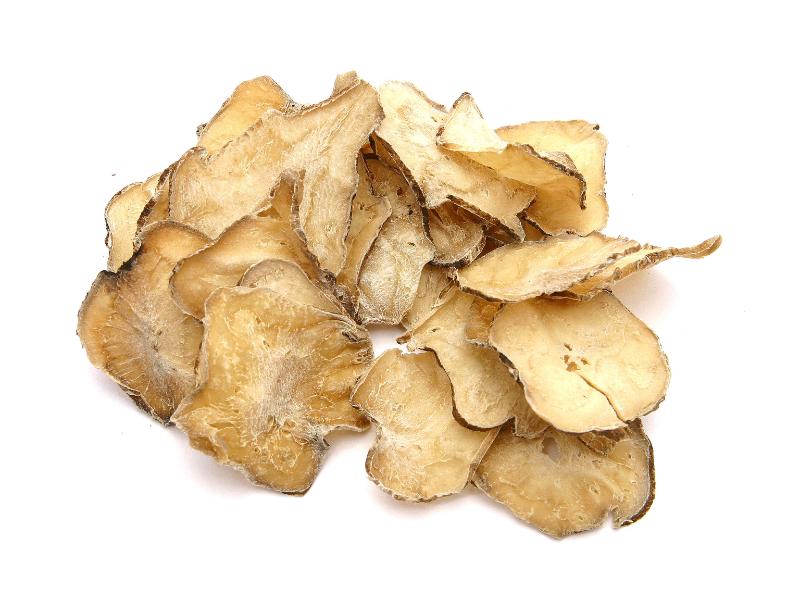Search in medicinals
Typhonii Rhizoma
Typhonium [rhizome]
白附子 〔白附子〕 bái fù zǐ

Alternate Chinese names: 禹白附 yǔ bái fù
Kingdom: Plant
Origin in PRC Pharmacopoeia: Typhonium giganteum Engl.
Origin in unofficial sources: Typhonium giganteum Engl.
Use: Medicinal
Category: Phlegm-transforming cough-relieving panting-calming agents / Phlegm-transforming agents
Properties: Acrid; warm; toxic. (Some sources also say sweet.)
Channel entry: Lung, liver, and spleen channels. (some sources say stomach and liver channel.)
Actions and indications:
- Dries dampness and transforms phlegm; dispels wind and checks tetany: Wind stroke (stroke) with phlegm congestion, deviated eyes and mouth, fright wind, convulsions, tetanus (lockjaw), hemilateral headache.
- Resolves toxin and disperses binds: Scrofula, phlegm nodes, venomous
snakebite s.
Dosage and method: Oral: 3–5g in decoctions. If taken as a powder, each dose should be 0.5–1g. For internal use, bái fù zǐ should be used in its processed form (制白附子zhì bái fù zǐ, Typhonii Gigantei Rhizoma Praeparatum). Raw bái fù zǐ may be applied externally.
Warnings: Contraindicated in pregnancy and unsuitable for patients with yīn vacuity wind stroke (stroke), blood vacuity engendering wind, or exuberant heat stirring liver wind.
Product description: The rhizome of Typhonium giganteum is oval or elliptical of varying size up to 9 cm long, and 6 cm in diameter. The exterior surface is yellowish white. At the top are stalk and scale remains and indented scars left by missing roots. The decocting pieces are slices less than 2 mm thick, white in the middle and brownish toward the periphery, with the skin appearing white and semi-translucent. The slices have a pronounced farinaceous texture, and swell when placed in water.
Production area: Shǎnxī (Shaanxi), Sìchuān, Jílín, and Liáoníng.
Etymology: The name bái fù zǐ 白附子 literally means white aconite.
See: Guān bái fù (关白附 Aconiti Coreani Radix, Korean aconite [root])
Back to search result Previous Next